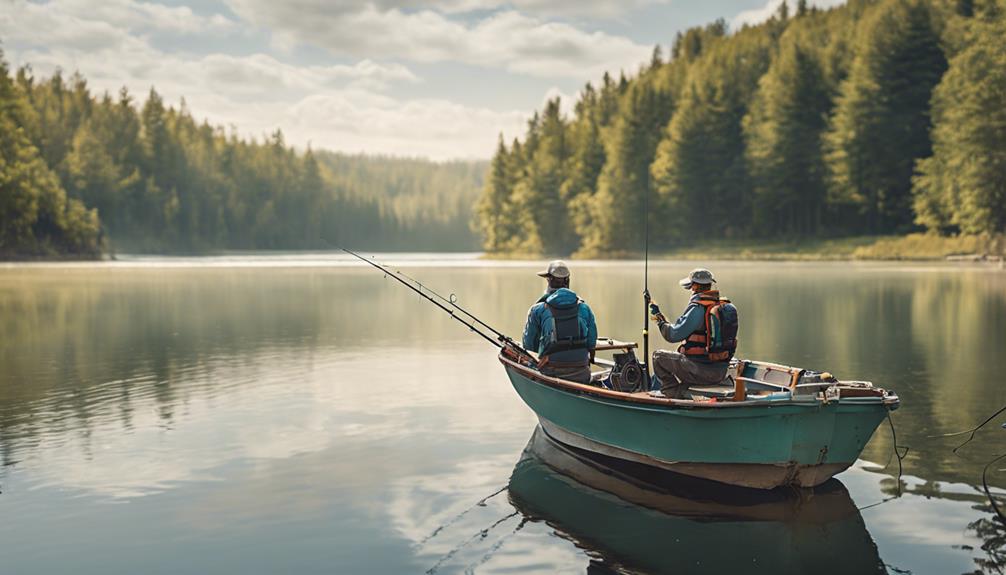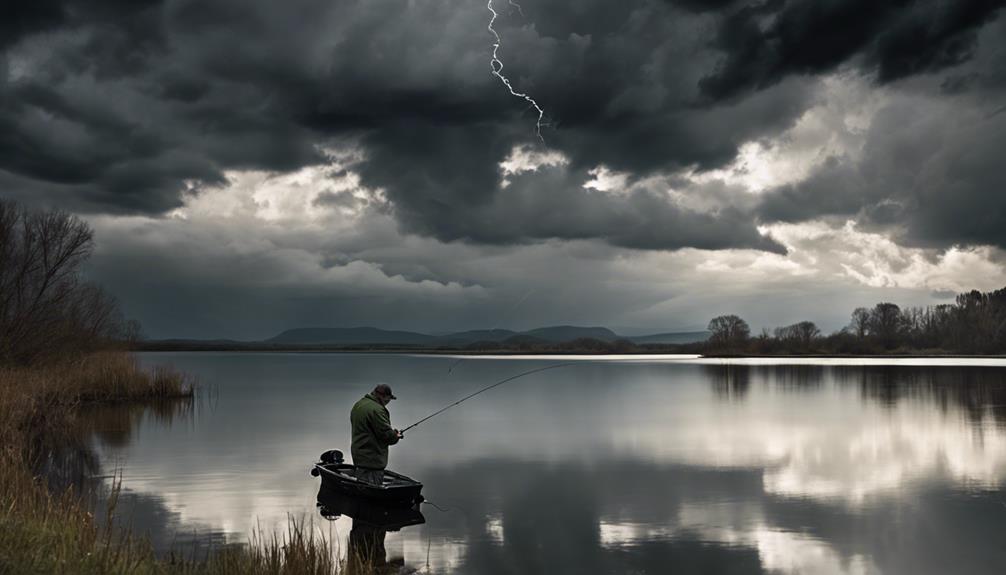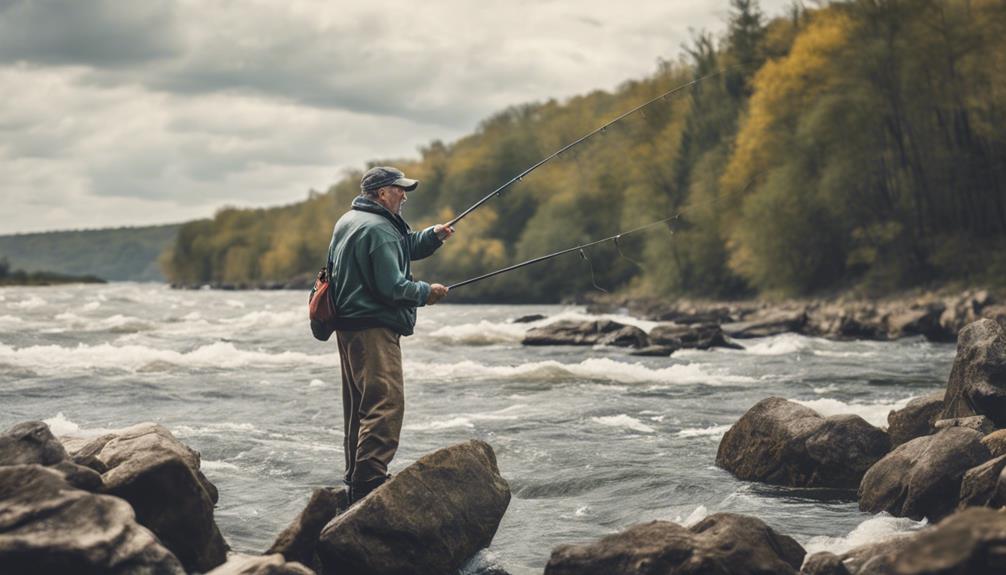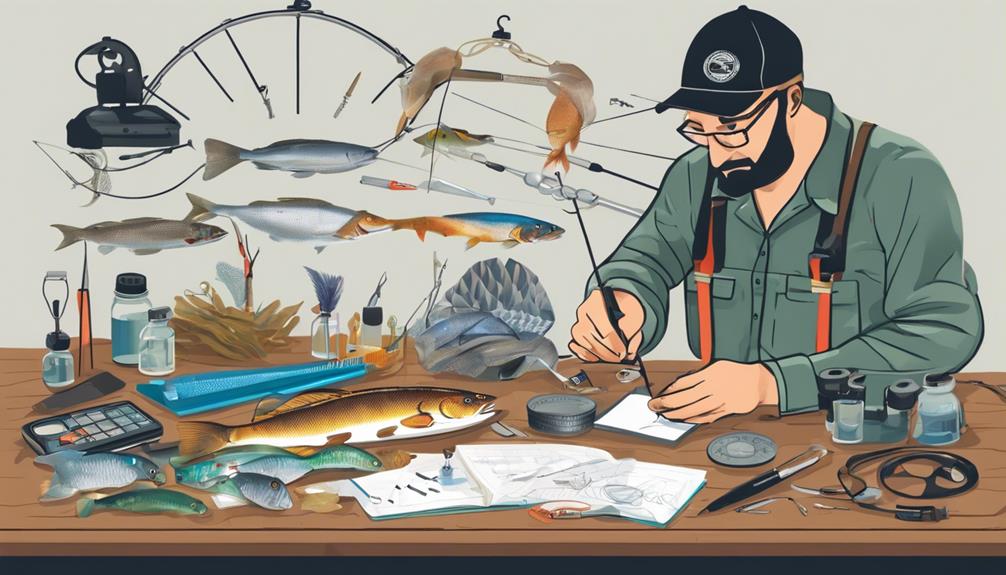In competitive angling, a significant percentage of accidents occur due to a lack of adherence to safety protocols. Ensuring your safety and that of others while on the water is paramount. From personal protective gear to emergency action plans, there are five key protocols that can make a difference between a successful day of fishing and a potential disaster.
Understanding these protocols can enhance your overall angling experience and keep you prepared for any unforeseen circumstances that may arise.
Importance of Safety in Angling Competitions
Ensuring safety during angling competitions is paramount for protecting participants and promoting a secure environment for all involved. Safety briefings play a crucial role in orienting participants about potential risks and necessary precautions. Before any competition begins, organizers conduct comprehensive safety briefings to educate anglers about the specific rules, emergency procedures, and potential hazards they may encounter during the event. These briefings ensure that everyone is aware of the risks involved and how to mitigate them effectively.
Risk assessment is another key aspect of maintaining safety in angling competitions. Organizers meticulously evaluate the competition area to identify any potential risks or dangers that participants may face. By conducting thorough risk assessments, they can implement appropriate safety measures to prevent accidents and ensure a smooth-running event. Factors such as weather conditions, water depth, underwater obstacles, and wildlife presence are carefully considered during the risk assessment process to safeguard the well-being of anglers.
Personal Protective Gear Required
To ensure participant safety, anglers are required to wear specific personal protective gear during angling competitions. Proper attire is crucial in safeguarding yourself while out on the water. Make sure to wear clothing that provides sun protection, such as long-sleeved shirts, wide-brimmed hats, and UV-blocking sunglasses. This attire not only shields you from harmful sun rays but also helps prevent sunburns and heat exhaustion during long hours spent fishing.
In addition to proper attire, safety equipment is essential for anglers. Life jackets are a non-negotiable item that must be worn at all times while on the water, especially in case of unexpected falls or emergencies. Choose a well-fitted, Coast Guard-approved life jacket that suits your angling needs. It should allow for ease of movement while providing adequate flotation to keep you safe.
Furthermore, protective footwear is often overlooked but plays a significant role in preventing slips, trips, or injuries while navigating boats, docks, or rocky shorelines. Sturdy, non-slip shoes or boots are recommended to ensure stability on wet surfaces and protection from sharp objects underwater.
Emergency Action Plan Preparation
In case of emergencies during angling competitions, promptly establish and communicate an effective Emergency Action Plan. When every second counts, having a well-thought-out plan can make a significant difference in ensuring the safety of all participants. Here are some key points to consider when preparing your Emergency Action Plan:
- Emergency Response: Designate clear roles and responsibilities for different scenarios, such as medical emergencies, severe weather conditions, or water accidents. Ensure that all team members understand the procedures to follow and whom to contact in each situation. Practice drills periodically to keep everyone prepared and aware of their roles during an emergency.
- Communication Strategies: Establish robust communication channels to relay information swiftly and accurately. Utilize tools like two-way radios, signal flags, or whistle codes to communicate effectively, especially in noisy or remote angling locations. Designate specific meeting points where participants should gather in case of an emergency to streamline headcounts and ensure everyone's safety.
- Emergency Contact Information: Compile a list of emergency contacts, including local emergency services, nearby medical facilities, and key event staff members. Distribute this list to all participants and ensure that everyone knows where to find this crucial information at all times. Having quick access to emergency contact information can expedite the response time and facilitate a coordinated effort in managing the situation.
Weather Monitoring and Awareness
Stay vigilant and monitor weather conditions closely to ensure the safety of all participants during angling competitions. Weather preparation is key in ensuring a safe angling experience. Before heading out, check the weather forecast for the day. Look for any signs of incoming storms or adverse weather conditions that could pose a risk to anglers. It's crucial to be aware of changing weather patterns throughout the day, as conditions can shift rapidly, especially on bodies of water.
Safety tips for weather monitoring include bringing a portable weather radio or a reliable smartphone app that provides real-time updates. Keep an eye on the sky for dark clouds, sudden changes in wind direction, or a rapid drop in temperature, as these could signal an approaching storm. If you notice any of these warning signs, it's best to head back to shore immediately.
In addition to monitoring the weather, make sure to have a plan in place in case of emergencies. This plan should include designated shelter areas in case of lightning or strong winds, as well as a communication strategy to ensure that all participants are accounted for. By staying prepared and alert to weather conditions, you can help ensure a safe and enjoyable angling competition for everyone involved.
Boat Safety and Navigation Rules
Ensure the safety of all participants by adhering to essential boat safety and navigation rules while competing in angling tournaments. When out on the water, following boating etiquette and navigation regulations is crucial to prevent accidents and ensure a smooth angling experience. Here are some key points to keep in mind:
- Wear Personal Flotation Devices (PFDs): Always have enough Coast Guard-approved life jackets on board for every participant, and make sure they're easily accessible. Encourage everyone to wear their PFDs at all times while the boat is in motion.
- Maintain a Safe Speed: Observe speed limits and adjust your speed according to the conditions. Be mindful of other boats, especially when navigating through congested areas or when visibility is limited.
- Learn and Follow Navigation Rules: Familiarize yourself with navigation regulations such as right-of-way rules, sound signaling, and lights to be displayed at night. Understanding these rules will help you navigate safely and avoid collisions with other vessels.
First Aid Kit Essentials
When participating in competitive angling tournaments, it's essential to have a well-equipped first aid kit with key essentials readily available. Accidents can happen, so being prepared with the right supplies can make a significant difference in handling injuries promptly. Here are some first aid tips and essentials for your angling adventures.
First and foremost, your first aid kit should include basic supplies such as adhesive bandages, gauze pads, adhesive tape, antiseptic wipes, and scissors. These items can help treat minor cuts, scrapes, and wounds that may occur during fishing activities. Additionally, it's crucial to have items like tweezers for removing splinters or hooks, and instant cold packs to reduce swelling in case of injuries.
In the event of a more serious injury or medical emergency, having supplies like a CPR mask, sterile gloves, a thermal blanket, and a basic first aid manual can be invaluable. These items can assist in providing emergency response and stabilizing a person until professional medical help arrives.
Communication Protocols Among Participants
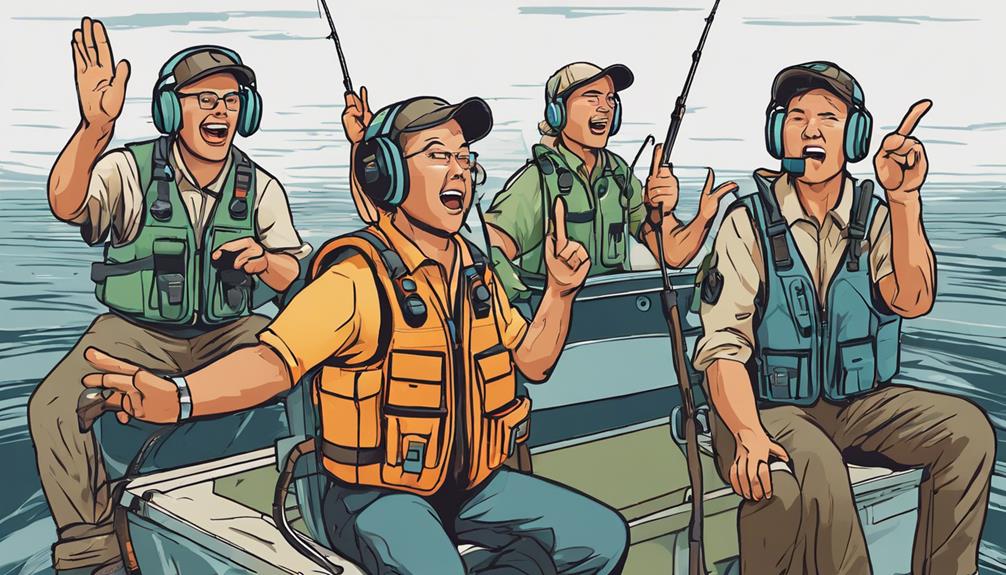
Promoting effective communication among participants is crucial for ensuring smooth coordination and swift responses during competitive angling tournaments. In the midst of the excitement and focus on angling, maintaining clear communication channels is vital to enhance safety and efficiency.
Here are some key points to consider:
- Establish Team Coordination: Designate specific roles for each team member to avoid confusion during the tournament. Assign responsibilities such as keeping an eye on weather changes, monitoring competitors' movements, or managing the boat's navigation. Clear delegation of tasks ensures that everyone knows their role and contributes to the team's overall success.
- Use Clear Communication: Develop a set of signals or codes for emergency response situations. Whether it's a medical emergency, a boat malfunction, or a sudden change in weather conditions, having predefined signals helps in swiftly conveying messages without delays. Practice these signals beforehand to ensure everyone understands and can act promptly when needed.
- Regular Check-ins: Implement regular check-ins among team members to ensure everyone's safety and well-being. Agree on specific intervals to communicate status updates, location changes, or any concerns that arise. These check-ins not only foster a sense of teamwork but also provide a mechanism to address any issues promptly.
Understanding Fish Handling Safety
To enhance your safety and the well-being of the fish, understanding proper fish handling techniques is essential. When engaging in competitive angling, it's crucial to employ the correct methods to ensure the safety of both yourself and the fish you catch. Proper technique not only minimizes the risk of injury to you but also helps to increase the chances of survival for the fish after being released back into the water.
Fish behavior plays a significant role in how you handle them. Different species exhibit varying responses to being caught, with some more prone to stress than others. It's important to handle each fish with care and consideration for their well-being. Avoid unnecessary roughness or prolonged air exposure as these can harm the fish and decrease their chances of survival post-release.
When handling a fish, make sure your hands are wet to protect their delicate skin and scales. Avoid squeezing the fish tightly or touching their gills, as this can cause damage and hinder their ability to breathe properly. By supporting the fish gently and swiftly returning it to the water, you can help ensure its survival and minimize any adverse effects of being caught. Remember, proper fish handling not only enhances your safety but also contributes to the conservation of fish populations in the long run.
Frequently Asked Questions
What Are Some Common Injuries That Can Occur During Angling Competitions and How Can They Be Prevented?
When fishing competitively, injuries like cuts, hook punctures, and strains can happen. To prevent mishaps, ensure you have a well-stocked first aid kit including bandages, antiseptic wipes, and pain relievers.
Use proper gear and techniques to minimize injury risks. If an injury occurs, apply first aid immediately. Seek medical attention for severe injuries.
Stay safe by following safety guidelines and being prepared for any angling competition.
Are There Any Specific Regulations or Guidelines for Anglers Fishing in Different Bodies of Water?
When fishing in various bodies of water, you must follow specific fishing regulations set by authorities. Enforcement ensures compliance and protects marine life.
Prioritize water safety and always maintain your equipment to prevent accidents. Stay informed about local guidelines and restrictions to fish responsibly.
How Can Anglers Ensure They Are Properly Prepared for Unexpected Emergencies While Out on the Water?
To ensure you're properly prepared for unexpected emergencies while out on the water, always have emergency response and first aid training. Conduct a risk assessment before each trip and pack essential safety equipment like life jackets and a first aid kit.
Stay updated on weather conditions and always inform someone of your plans before heading out. Being proactive and prepared can make all the difference in staying safe while enjoying your time fishing.
What Measures Can Anglers Take to Protect Themselves From Severe Weather Conditions During Competitions?
To protect yourself from severe weather during competitions, here are some key strategies:
- Keep an eye on the forecast.
- Maintain your equipment properly and always have emergency response plans in place.
- Stay connected with your team using effective communication strategies.
- Be prepared for any unexpected changes in weather conditions and prioritize safety above all else.
Are There Any Specific Techniques or Tools Recommended for Safely Handling Different Types of Fish During Competitions?
When handling fish during competitions, safety protocols are crucial. Use proper equipment like fish grips to securely hold the fish without harming them. Employ techniques such as wetting your hands before handling the fish to protect their slime coat.
Always support the fish properly to avoid unnecessary stress or injury. Following these fish handling guidelines will ensure both your safety and the well-being of the fish you catch.
Conclusion
In conclusion, when participating in competitive angling, safety should always be your top priority. By following these top 5 safety protocols, you can ensure a safe and enjoyable experience on the water.
Remember to always wear your personal protective gear, have an emergency action plan in place, monitor the weather conditions, follow boat safety rules, and be prepared with a first aid kit.
Stay safe and happy fishing!
